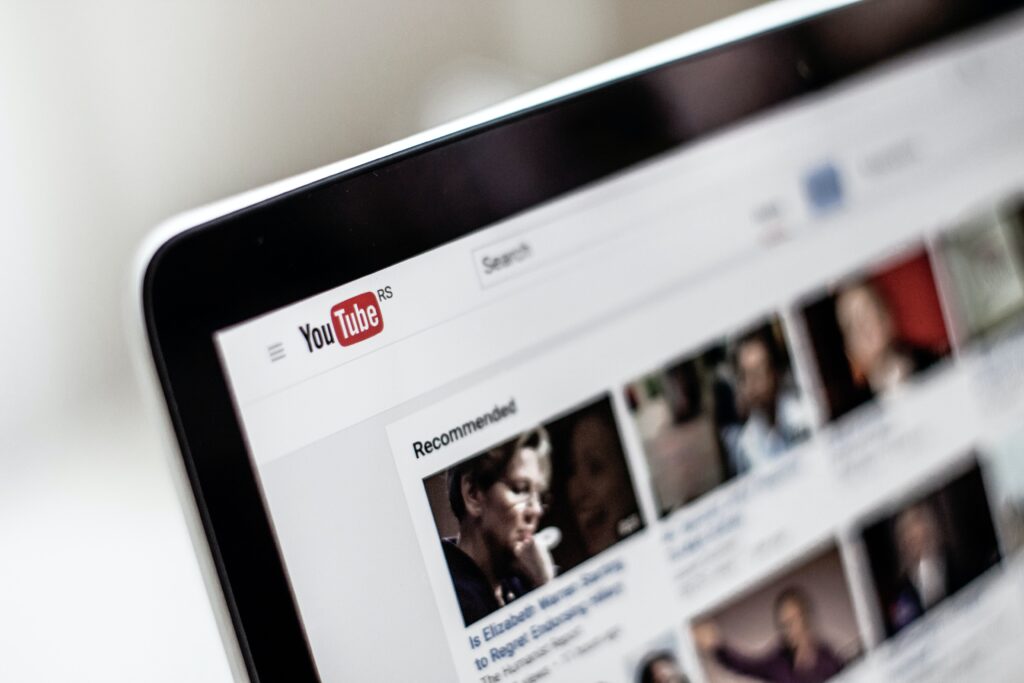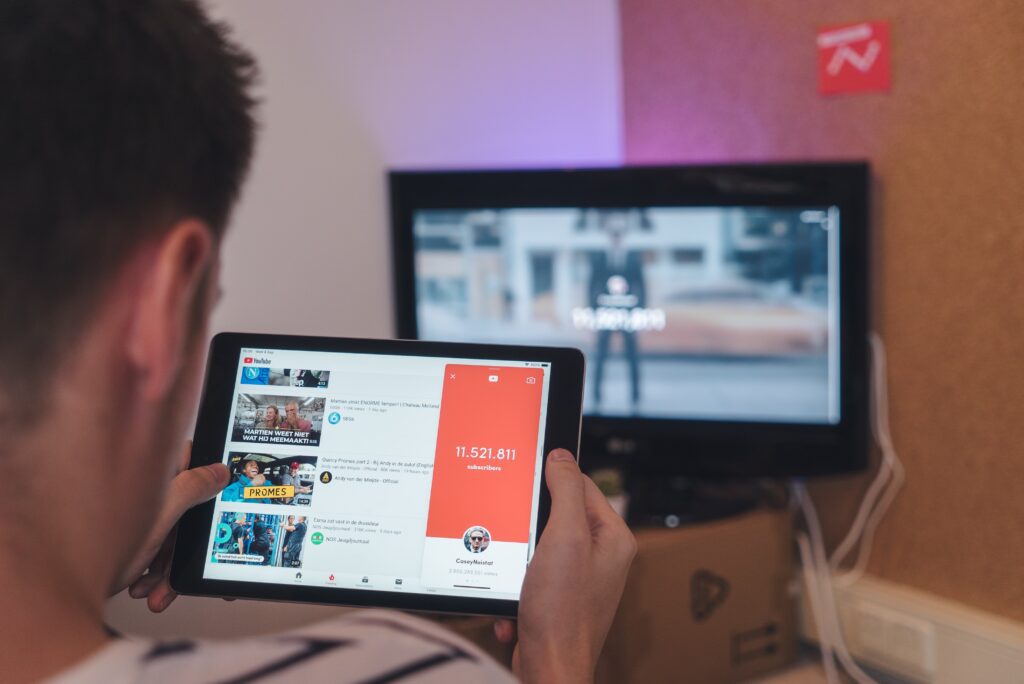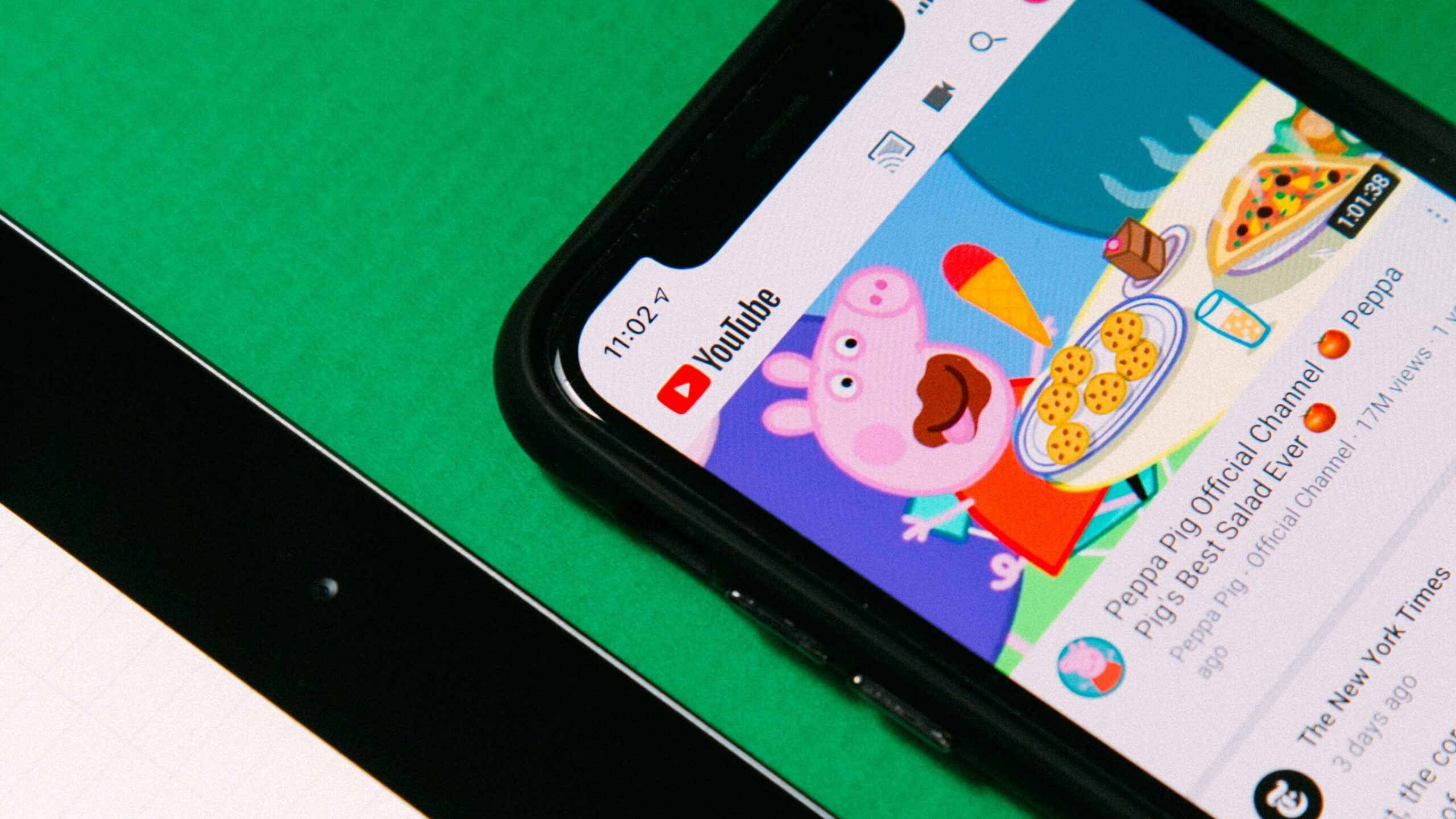
Make the Most Out of Your YouTube Ad Spend

Today, YouTube is the second largest search engine globally and has over 2 billion users.
People watch 5 billion videos on YouTube every day, and 300 hundred hours of video content is uploaded to YouTube every minute (source). Additionally, YouTube reaches more 18-49-year-olds than any cable network in the US. YouTube’s success and the following that it has gained creates dozens of opportunities for marketers to reach leads by advertising on its platform.
With that said, because of YouTube’s popularity, we must be showing up on that platform as advertisers, marketers, and business owners. It is the second most popular website, and because of how much content YouTube’s audience consumes, it is a critical piece in the marketing puzzle for 2022.
YouTube advertising is one way to reach your target audience so that you can connect with them and share your business with them. YouTube knows this and the impact they hold on your audience and has created new formats and tracking capabilities where you can also obtain more information and see the return on investment for your video advertising.
Businesses are catching onto the impact that YouTube has on potential customers. And it’s harder to stand out amongst your competition which is why advertisers need to invest in YouTube advertising intentionally to gain visibility and get in front of their target audience.
If you’re already advertising on YouTube or still thinking about it, YouTube has several targeting capabilities to assist you in advertising throughout the customer journey. By establishing a dedicated YouTube strategy, your business can reach more qualified leads and hopefully turn them into sales.
This article will discuss what YouTube advertising is, the different types of YouTube ads, and tips to make the most out of your YouTube ad spend.

Table of Contents:
- What is YouTube Advertising?
- Types of YouTube Ads
- Tips to Make the Most Out of Your YouTube Ad Spend
What is YouTube Advertising?
YouTube advertising is managed through Google ads. It is advertising to help your business show up with video content on YouTube or on YouTube’s search results page to maximize its reach.
Ideally, businesses will create brief videos that appear to the user at several points while they spend time on YouTube. Types of YouTube ads could be your video showing up on YouTube’s search results page, or your video could play before or after another video. It all depends on the advertiser’s ad type while setting up their campaign.
YouTube ads can range from as short as 6-second videos to more than three-minute videos.
Types of YouTube Ads
There are a few different types of YouTube ads:
- Skippable in-stream ads
- Non-skippable in-stream ads
- Video discovery ads
- Non-video ads
Skippable in-stream ads
These types of ads play before or during a video and are, as the name suggests, skippable. Skippable In-Stream ads can be skilled after the first five seconds of the ad plays.
These ads must be at least 12 seconds long, and advertisers only need to pay when:
- Viewers watch the video for at least 30 seconds.
- Viewers watch the entire video.
- Viewers interact with the ad by clicking on it.
You will notice that occasionally Skippable In-Stream ads are referred to as “TrueView.” TrueView is YouTube’s name for the payment type when advertisers only pay for ad impressions, watching the video, or interacting with the ad.
With Skippable In-Stream ads, advertisers can reach a more attentive audience. If the audience isn’t interested, they can skip the ad, and there will be no financial penalty for the advertisers, so they save money as well.
Non-Skippable In-Stream Ads
Since most of YouTube’s audience admits to skipping ads, advertisers can choose to run non-skippable videos.
Non-Skippable videos are for advertisers whose goals are to grow brand awareness.
However, they are considered unpopular because viewers have less control over these ads. They play before the video starts and partway through 10 minutes or longer videos.
In addition, payments for Non-Skippable ads are different than Skippable ads. These ads are billed on a cost-per-thousand or CPM basis. Meaning advertisers pay a fee per thousand views. Because of this, it’s essential to be direct with your targeting so you are not spending money on poor prospects.
Another type of Non-Skippable ad is bumper ads. Bumper ads are quick 6-second long videos that viewers can’t skip and are in-stream. Bumper ad bids are set at CPM.

Video discovery ads
Video Discovery YouTube ads, formerly known as in-display ads, show up on the homepage, search results page, and right-hand sidebar of the related video section on YouTube’s video watch pages.
These ads have an image thumbnail, up to 3 lines of text, and show up alongside organic search results. So ideally, if your video looks more relevant than the organic results, people will watch yours instead.
Non-video ads
Non-video ads are an excellent option for advertisers who may not have the budget for video but still want to advertise on YouTube. Examples of Non-video ads are overlays and banners.
They’re ads that hover at the bottom of a video or the end screen. Ideally, these videos would appear alongside related content, and the benefit of these types of ads is that you can advertise your product in an intrusive way so that your audience cannot miss it.
Tips to Make the Most Out of Your YouTube Ad Spend
Now that we know the types of ads advertisers can choose from, let’s talk about how to make the most out of your YouTube Ad spend.
Choose the Type or Types of Ads you Want to Run
With so many different ads available, you need to find what works for your budget and your business to create the most effective strategy.
When choosing the right kind of ads, consider your goals
- What are you trying to accomplish in your business?
- How aggressive do you want to be with your advertising?
- What does a successful ad look like?
You won’t know what to look for or how to track an ad campaign if you don’t have goals in place. A few examples of goals would be to increase leads, sign-ups, or sales.
We recommend experimenting with different ad formats to see how they perform and resonate with your audience. Experimenting with other ads helps you know what gets the most engagement for your business. For example, you could find that skippable ads are better than display ads or bumper ads are better than skippable ads. Take the time to choose the right ad type for your campaign. When launching a successful advertising campaign, first identify what kind of campaign you want to run.
For example: If you want to increase traffic to your website, you may opt for a skippable ad so that people have time to watch your content and click through as opposed to a 6 second bumper ad.
Know your Audience and Take Advantage of YouTube’s Targeting Options
With any type of advertising, it’s audience-focused.
There are 2 billion users on YouTube, and people watch 5 billion videos every day. By not taking the time to honestly know your audience, what resonates with them, how to reach them, and how to speak to them, you could be wasting money on unqualified and irrelevant YouTube users who aren’t interested in your product or brand.
YouTube provides tons of flexibility in how advertisers can control who sees their ads. We recently wrote a blog about finding your target audience, so if you are struggling to narrow down your audience and get targeted, we encourage you to read it. Once you establish your target audience, you can create a YouTube advertising strategy. Then, through YouTube advertising, you can get in front of your audience and create ads to better appeal to that audience.
By reaching the right people, you can improve engagement on your ads and earn more leads for your business.

Create Compelling, Attention-Grabbing Content
With so much competition in the market, you don’t want to get lost in the YouTube crowd. With YouTube Advertising, your ads are constantly competing with different ads, and a common mistake that people make when creating video ads is taking time before the main point of their ad.
With any form of video advertising, work to ensure that your hook is in the first few seconds of the video to grab the viewer’s attention before they can click “skip ad” or move on to the following video.
When creating your video ads, ask a question right away, add an exciting hook at the beginning, or tell your brand story. By catching your audience’s attention early on, you can help ensure they stay engaged and interested for the duration of the ad.
Take time to produce quality content that doesn’t automatically feel like an advertisement – meaning it’s not a disturbance or annoying for your audience. Use video to tell a story or a joke, and introduce your business personally.
Include a Call-to-Action
When producing video advertising – include a call-to-action (CTA).
A CTA is meant to help guide your audience in clicking on your website, signing up for a newsletter, or learning more. If your video lacks a call-to-action, your audience won’t know how to proceed (other than to watch their next video). So ensure that your next step is clear for your audience. By choosing the proper CTA, you’ll encourage more engagement from your audience and generate more clicks on your ad.
Remember, you can include links in your video advertising, so link to a landing page, information page, a product page – whatever makes sense for the ad you created. A compelling video and a call to action will encourage your audience to engage with your ad and drive that traffic to your website.
Know your Metrics
You’ve taken the time to research and understand ad types, you have found your target audience, and invested in creating quality content; now what? How do you know that the time and effort invested is worth it? You need to pay attention to the metrics.
If you want to create a successful YouTube advertising strategy, pinpoint which metrics you want to track and monitor to judge the performance of a campaign.
What does success mean for you?
When you know the metrics you want to track, you’ll see what your audience engages with more clearly.
When you’re able to see how your ads perform, you’ll be able to determine whether or not they are effective, if you should keep running them, or if you need to make changes to improve their performance.
There are four categories to track video metrics, and they are:
- Views and Impressions
- Audience
- View Rate
- Conversions
Review these metrics and define your goals based on them. Depending on your goals, some of these metrics may matter more than others. You want to ensure that you’ve formalized what you’re hoping to see to optimize your ads and improve your results.
For example, some metrics are better for branding goals while others are more lead-driven. Knowing your goals and the metrics will help you determine the type of content you want to create.
With video content on the rise and the popularity of YouTube- video advertising is a must. With 2 billion users and counting, it’s vital to start working on a video advertising strategy. Through video advertising, you can reach a larger audience and earn more leads and conversions with thoughtful and attention-grabbing video content.
Of course, YouTube advertising can be overwhelming. Still, with YouTube’s diverse advertising formats, you can pick and choose what works for you, your business, and your audience to fulfill your goals.
Are you advertising on YouTube? If not, what are your reservations? We want to hear your stories, your challenges, and your qualms. So, head over to Linkedin and tell us all about it.
If you’re interested in getting active with YouTube advertising or improving your current strategy, we would love to work with you – book a free consultation today.


